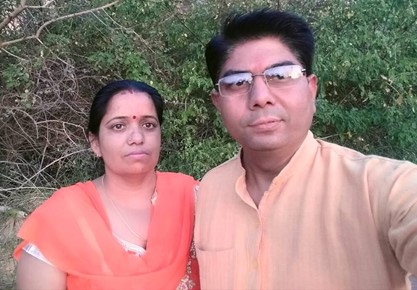Interview with Sukhbir Gir, Founder of K-Star Academy | Client of MicroVest portfolio company, Varthana

Please tell us about yourself. What inspired you to open your own school?
I left medicine in 2015 to establish K-Star Academy in Bhadwasiya, Jodhpur with the goal of doing something good and innovative in the education sector. I wanted to create a space for children with modern campus facilities. Education has always been a lucrative and growing sector, so I formed the academy to teach students skill-based learning while continuing to develop them in the formal education system. Most schools focus on teaching and less on how much students learn. To avoid this type of teaching in my school, I use a few modern learning approaches to help students improve their skills. I discarded rote learning, memorization, and other similar learning methods. I also wanted to emphasize the importance of correct topic progression in the classroom. It is necessary for teaching and learning to be in sync.
Tell us about the challenges K-Star Academy faced during COVID-19.
While schools were shut during the pandemic, keeping up with new developments was important, so I made whatever changes I could to ensure that the students had uninterrupted learning. The most difficult task I faced was training my teaching staff and employees to take online classes. I did everything to help the teachers learn how to create content and videos for use in online classrooms. Another problem was that some parents were having technical difficulties due to slow internet connections. My team has been using Varthana’s Digital Solution for some time now. Now, my students have gained control of their learning through assessments and hands-on projects.

Some parents did not have access to smart gadgets, so teachers created and distributed a curriculum to their students. Our teachers created videos using content from textbooks and recorded themselves in the classroom. Questions were answered in WhatsApp class groups and we now have an app where students may ask questions that are visible to everyone. My students come from low-income families, so serving them gives me a sense of fulfillment. We have grown significantly as an educational institution, and we owe this to the teachers and their dedication.
Tell us about your partnership with Varthana.
When I founded my school, we only had 65 students and that number grew to 300 in four years, advancing from pre-primary to eighth grade. My success would not have been possible without Varthana. They are much more than a family and have been an invaluable part of the school for the last three years. After our loan was approved, we collaborated to build an activity room and install cameras. There are also theme-based learning rooms for preprimary students. Children now enjoy newly painted walls that make them feel as if they are sitting in a pond, aquarium, or even a forest thanks to extensive renovations. It cost a significant amount of money to complete this. We had planned to do it in the long run, but Varthana approached us and offered financial assistance. The fact that we are doing things differently quickly spread throughout the neighborhood, and enrollments began to pour in. Students like the content and believe it is well-planned. I want to provide a smart learning infrastructure to young people and shape them into responsible citizens. The students now look forward to seeing the Varthana Education Specialist who visits the school and organizes engaging sessions in their classrooms. Parents have also expressed their satisfaction with our smart classroom product and want to see its continued use in the school.
The client of our portfolio company profiled here is for educational purposes only and may not represent all of the portfolio holdings. It should not be assumed that investments in the company identified and discussed were or will be profitable. The companies profiled were selected based on their financial inclusion and impact with no reference to amount of profits or losses, realized or unrealized.